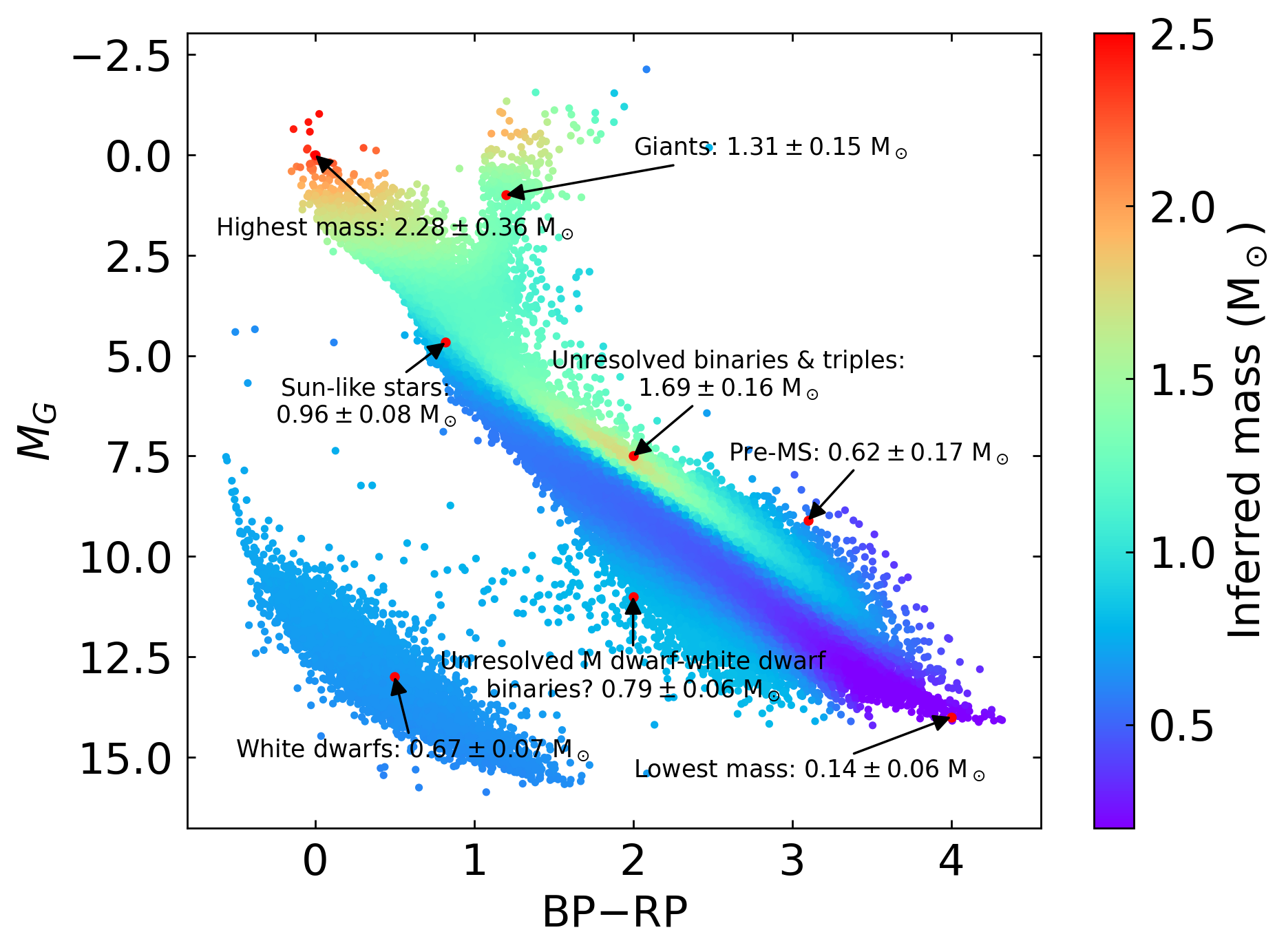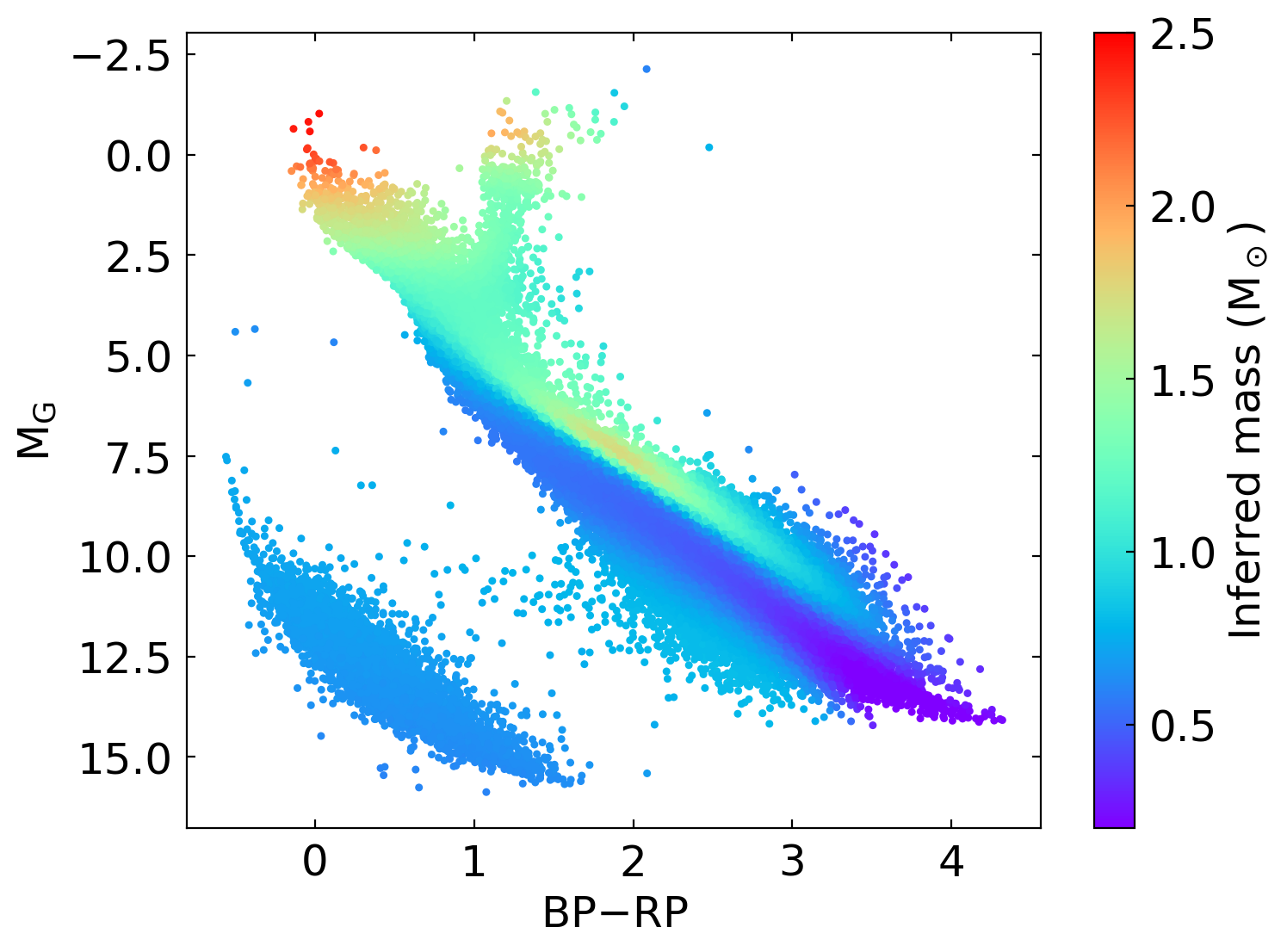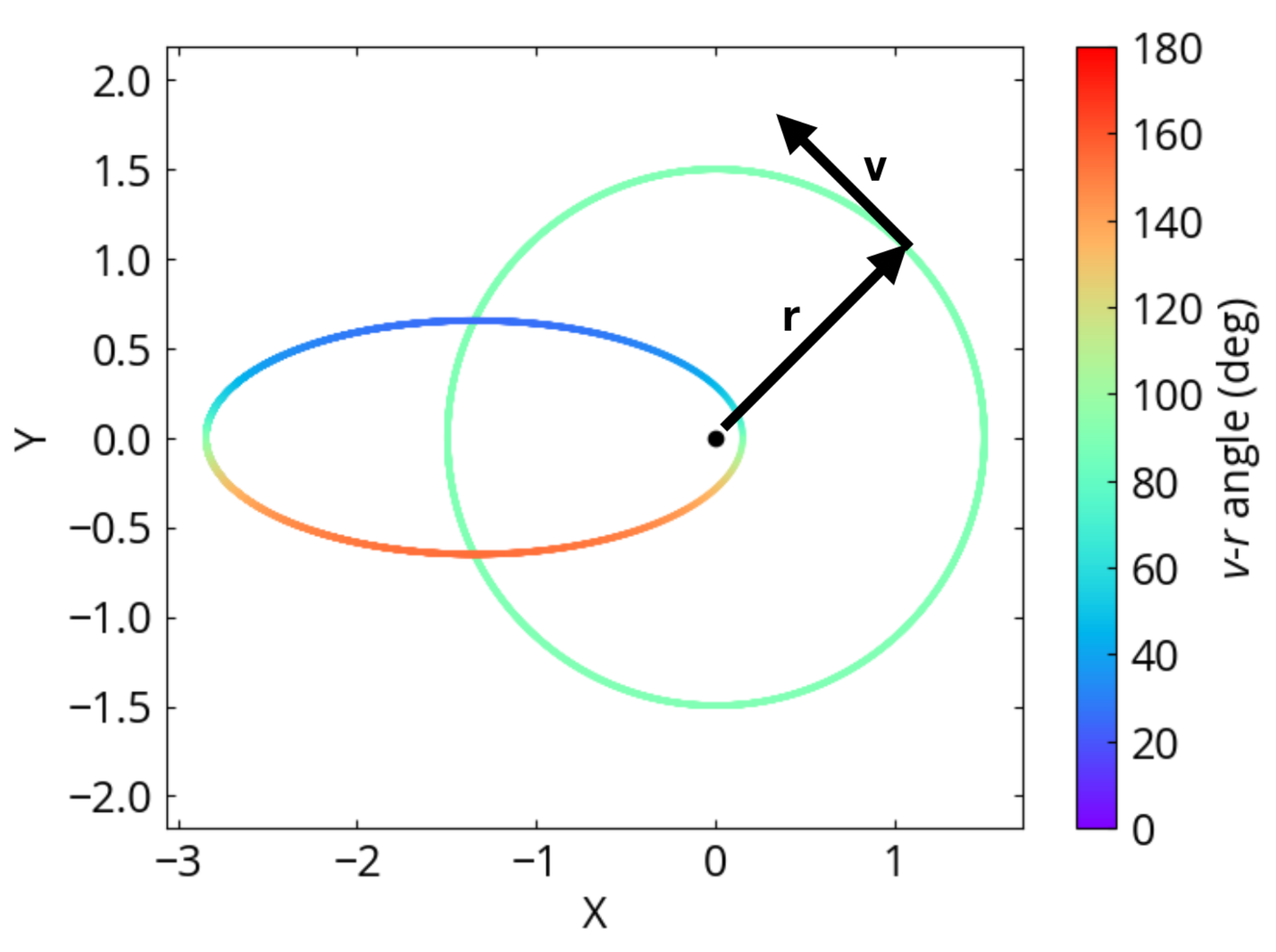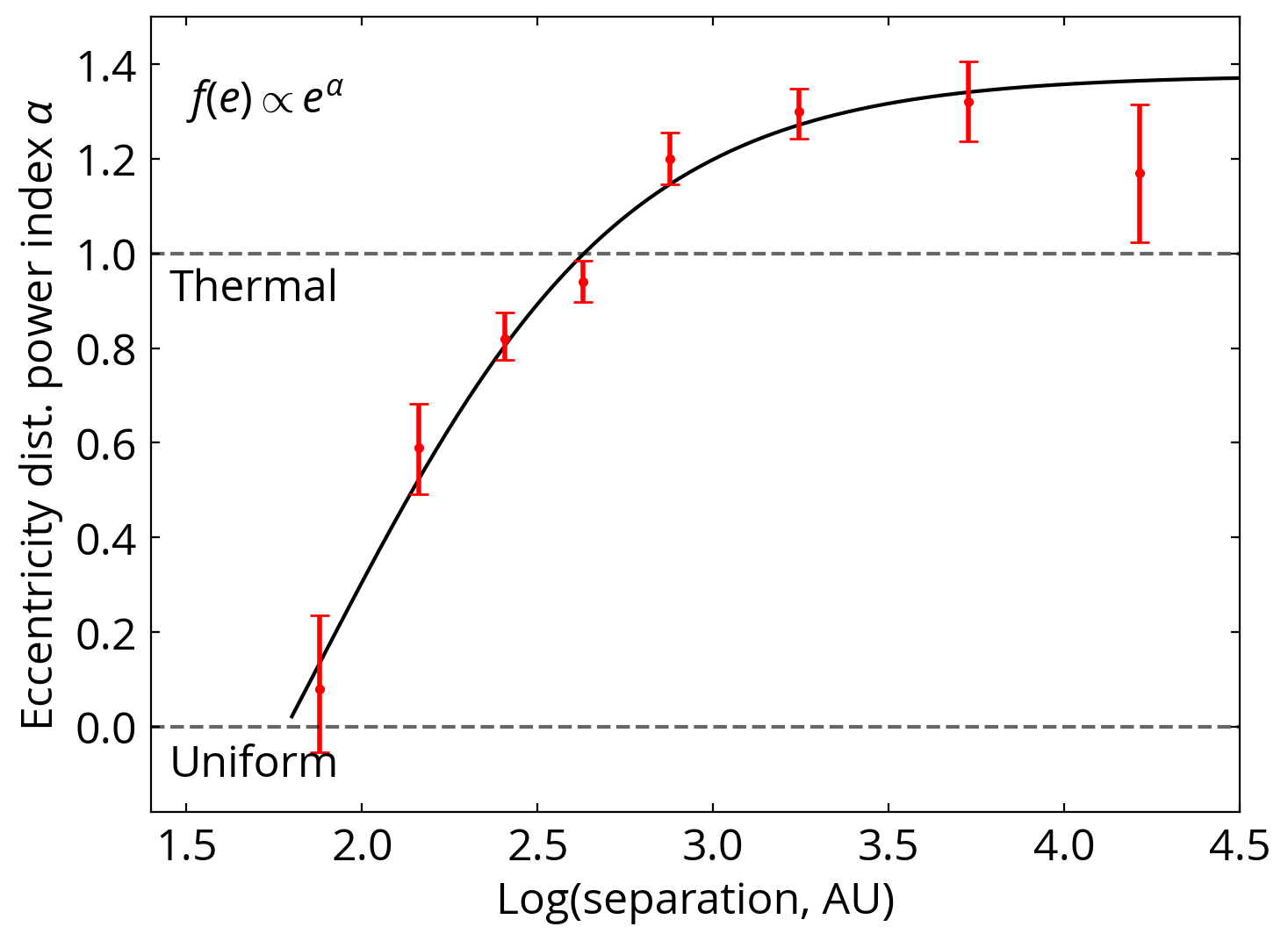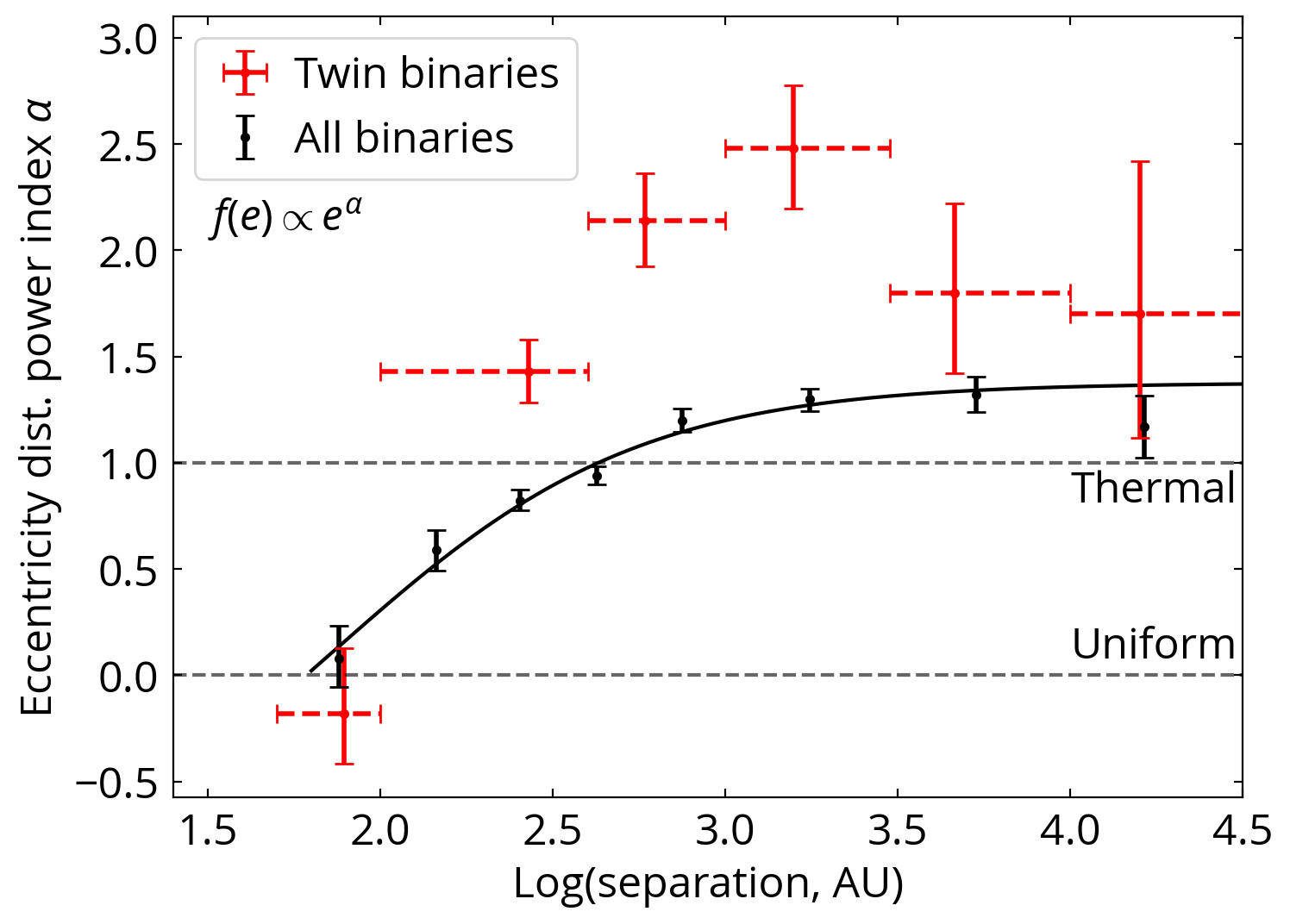About
Hello, I am Hsiang-Chih Hwang (黃翔致). I am a postdoc fellow at the Institute for Advanced Study. My research interest is to squeeze the information out of the astrophysical data using rigorous statistical methods and machine learning, with subjects covering the formation and the evolution of binary stars, triple stars (three-body systems), white dwarfs (and their binaries), Milky Way dynamics, active galactic nuclei, binary quasars, and the variability in the sky. I received my Ph.D. in astrophysics from Johns Hopkins University in 2021. Before I came to JHU in 2016, I got my Bachelor's degree in Physics and Electrical Engineering at National Taiwan University. I am a coffee and milk tea lover. In my spare time, I like hiking, traveling, and playing badminton.
Research
Dynamical masses across the Hertzsprung–Russell diagram
When I first saw the Hertzsprung–Russell (H-R) diagram from Gaia, I wondered: can I make an H-R diagram color-coded by the mass, the most fundamental stellar parameter? The answer is: yes, we can! In Hwang et al. (2023, submitted), we use wide binary stars to measure the dynamical masses for the entire H-R diagram. Specifically, Gaia's amazing astrometric precision is able to measure the orbital motions of wide binaries, which contain mass information. Then by combining statistical inference and machine learning (neural network!), we successfully measure the mass for the entire H-R diagram, including main-sequence stars, unresolved binaries and triples, pre-main-sequence stars, (sub-)giants, and white dwarfs! Therefore, now we have dynamical mass measurements for almost every point in the H-R diagram! The codes are available on Github. You can train your own results in just a few minutes!
Orbital eccentricities of wide binary stars
Wide binary stars typically have orbital periods of more than 1 thousand years. Therefore, when we observe these wide binaries, we are only seeing a snapshot of their orbits. Then how do we know the eccentricities (i.e., the shape of their orbits) of these wide binaries? In Hwang, Ting, & Zakamska (2022a), we developed a Bayesian framework to infer the eccentricity distribution from the "v-r angles". "v-r angle" is the angle between the orbital velocity vector ("v") and the separation vector ("r"). Imagine that you are seeing a face-on circular binary, then its v-r angle is always 90 deg (by the definition of circle). And the v-r angle is in general not 90 deg for eccentric orbits. Therefore, by measuring the distribution of v-r angles, we can infer the underlying eccentricity distribution even when we only have a snapshot of the orbit!
With these eccentricity measurements, we can now answer questions like the formation of wide binaries and the interaction between wide binaries and the Milky Way! For example, we found that a special wide binary population "twin wide binaries" turns out to be highly eccentric (Hwang et al. 2022b). Their high eccentricities suggest that they were originally formed as close binaries, and some subsequent process somehow made them highly eccentric and appear as wide binaries. There are still many puzzles about these twin wide binaries (and twin binaries in general)! I also applied this technique to three-body systems (triples), investigating the eccentricities and orientation of the resolved tertiary stars (Hwang 2023). Our codes are available here . Let's try to solve the puzzles of these wide binaries and triples!
White dwarfs
White dwarfs play a critical role in astronomy because they are the progenitors of type Ia supernovae, which have been used to measure the accelerated expansion of the Universe. Led by Vedant Chandra, a senior at JHU (now a graduate student at Harvard), we have developed machine-learning-based tools wdtools for spectroscopic analysis of white dwarf spectra (Chandra, Hwang et al. (2020a)). Furthermore, we used these tools to measure the mass-radius relation of white dwarfs using gravitational redshifts over a large mass range for the first time Chandra, Hwang et al. (2020b)! This work has been featured in JHU press release and Science News. More excitingly, we recently discovered a double-white-dwarf binary with an orbital period of 99 minutes (Chandra, Hwang et al. 2021)!
Search for sub-kpc binary quasars
Our VODKA (Varstrometry for Off-nucleus and Dual sub-Kpc AGN) team is developing a new way to detect sub-kpc dual AGN and off-nucleus AGN using varstrometry. Varstrometry is a combination of variability and astrometry: with high-precision astrometry, we aim to detect the astrometric jitter caused by the unresolved, variable double-core (or offset) sources. Our exploration of varstrometry in Gaia DR2 is present in Hwang et al. (2020a), and its implication for off-nucleus AGN is present in Shen, Hwang et al. (2019). Our Hubble Space Telescope program (PI:Hwang) follows up these astrometry-selected candidates, and the results show that this new method can find binary quasars efficiently (Chen, Hwang, et al. (submitted))!
Formation and evolution of binary stars
The age of binaries is notoriously difficult to measure. My research uses stellar kinematics to constrain the age of short-period main-sequence binaries. In Hwang & Zakamska (2020b), we use kinematics as a proxy for stellar age, and show that short-period main-sequence binaries formed with a delay of ~1 Gyr. This delayed formation time supports that these binaries may be formed via magnetic braking.
In Hwang et al. (2020c), we search the wide, comoving companions around contact binaries and hot Jupiter hosts. We found that there is a weak or no enhancement of wide companion fraction for hot Jupiter hosts, and a strong enhancement for contact binaries, providing another clue on the formation of hot Jupiters and contact binaries.
Curriculum Vitae
My complete CV and publication list is available here.
Contact
You can find me via email most effectively!
Office location:
Bloomberg Hall 143
Email:
hchwang@ias.edu

